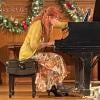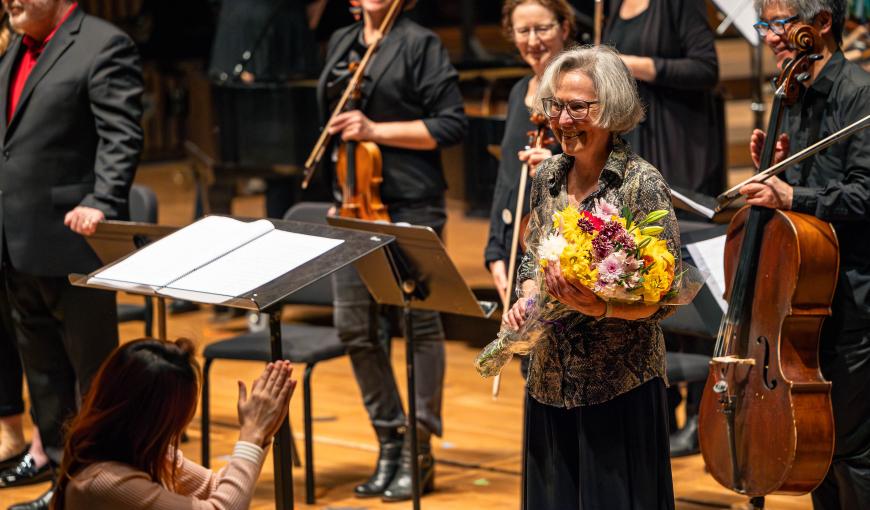
On Saturday, Feb. 3, the Eco Ensemble, UC Berkeley’s resident new-music group, presented a concert that was both a retrospective of composer Cindy Cox’s career and a first glimpse of a major work in progress. The program in Hertz Hall, presented by Cal Performances, showcased Cox as a composer of exuberant, witty, and colorful music and also one with a deep connection to the natural world. The performances from the instrumentalists and singers were first-class throughout. Conductor David Milnes never draws attention to himself, but the technical and musical excellence of his performances speaks volumes about his superb leadership.
In her instrumental works, Cox’s movement titles often emphasize mood and color, even when they suggest a tempo. “Headlong” doesn’t just instruct the musicians to play quickly; it suggests a certain recklessness or heedlessness. Such evocative titles, like “Silvery and lilting,” “Very fast, hysterical,” and “Resonant and fragile,” provide listeners with insight into the composer’s intentions.
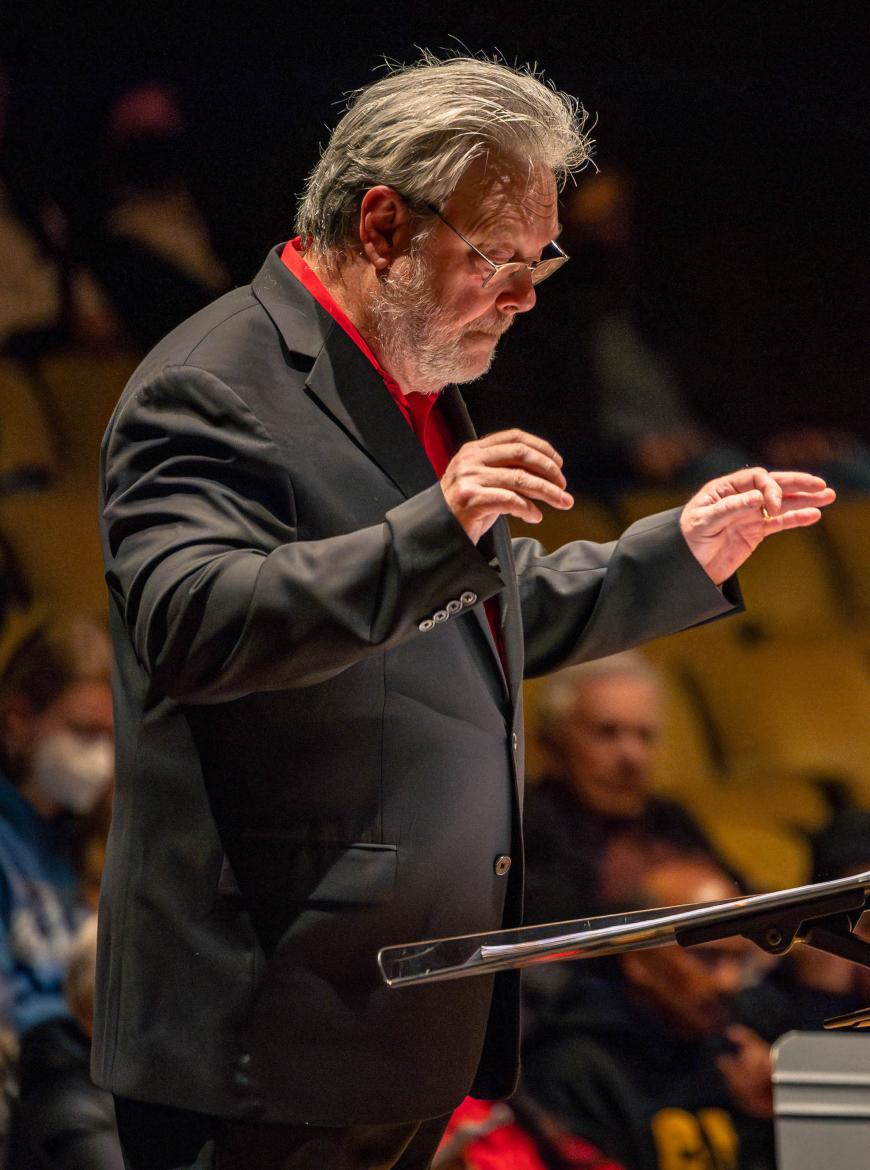
The program opened with Cañon, written as a companion piece to Igor Stravinsky’s Octet and sharing its unusual orchestration for flute, clarinet (doubling bass clarinet), two bassoons, two trumpets, trombone, and bass trombone. Cox’s first movement, “Headlong,” does indeed rush along, starting with short, punchy motifs repeated in different registers by the brass and reeds. Then the music shifts in mood, with fluttering and harmonics in the flute and clarinet, breathiness replacing the earlier vigor. These contrasting sections repeat with a fuguelike subject; the music piles up, louder and louder, before suddenly stopping.
The middle movement, “Tender, Nostalgic,” features muted brass, as if the music were being heard, or remembered, at a physical and temporal distance. Running figures make their appearance, with all of the instruments playing in parallel. The closing movement, “Strong, Punchy,” returns to the mood of the first, then fades out with oceanic sonorities, which made me wonder how Cañon would sound arranged for a much larger ensemble.
Curiously, [Four Studies of Light and Dark] contains six numbered sections spread across five movements. The composer’s program notes explain that the four studies are numbers II to V, while I and VI, both called “Frame,” bookend the piece. Cox notes that creating a structural frame remains an important compositional technique for her.
[Four Studies of Light and Dark], for piano and percussion, is a dazzling tour de force for both performers, an ongoing conversation where you can hear ideas tossed back and forth between the piano and an array of percussion instruments. The faster movements are fueled by an irrepressible, sometimes madcap energy and punctuated by any number of interjections from unlikely instruments like a slide whistle. Cox makes ample use of unusual timbres throughout, such as the quiet wail of bowed cymbals and the pitched rattle of a dime between piano strings. The last study, “Savagely,” is extremely exciting, full of pounding repetition on drums and the piano.
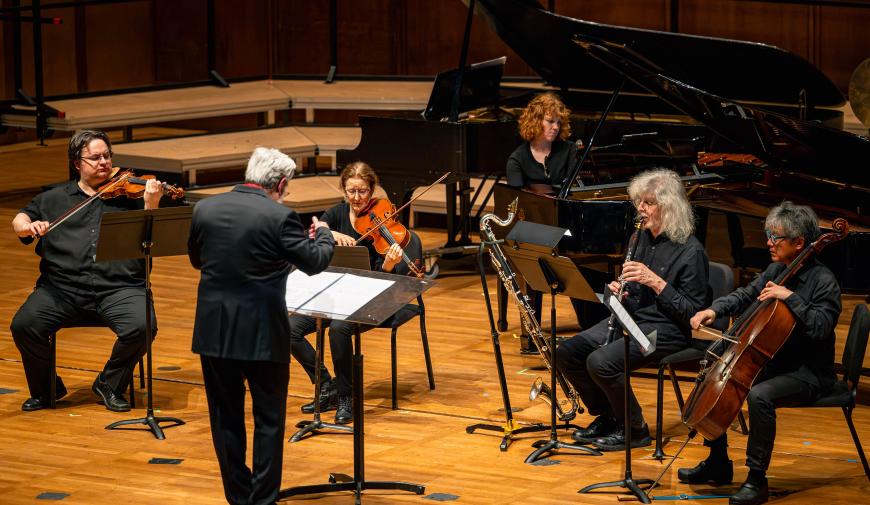
The first half of the program closed with Hishuk ish ts’awalk [All Things are One], for clarinet, violin, viola, cello, and piano. Cox was inspired to compose this piece after a visit to the temperate rainforest in the Pacific Rim National Park Reserve of Canada. Like the other works heard Saturday, Hishuk ish ts’awalk has a plethora of ideas that Cox combines and recombines in different ways to build musical structures, here across five movements.
The piano might swirl while the strings brood and the clarinet shrieks dissonantly against the other instruments. Sometimes the piano plays delicate figurations in its low register that you would more likely expect to hear at the top of the keyboard. Late in the piece comes a glorious section where the strings play harmonics against shimmering sounds in the piano. The piece could have lingered even more on the most beautiful utterances, the energetic drive of Cox’s music notwithstanding.
The entire second half of the concert was devoted to the world premiere of eight scenes from The Road to Xibalba, a musical theater work composed by Cox to an English libretto developed by her husband, poet John Campion. The libretto is drawn from Campion’s translation of The Popol Vuh, a sacred text recounting the mythology and history of the Kʼicheʼ Maya people.
In addition to a narrator, four singers, and a large chamber ensemble, The Road to Xibalba incorporates electronics and field recordings of Central American birds and wildlife. When this four-act work is eventually staged, it will also have a chorus and dancers.
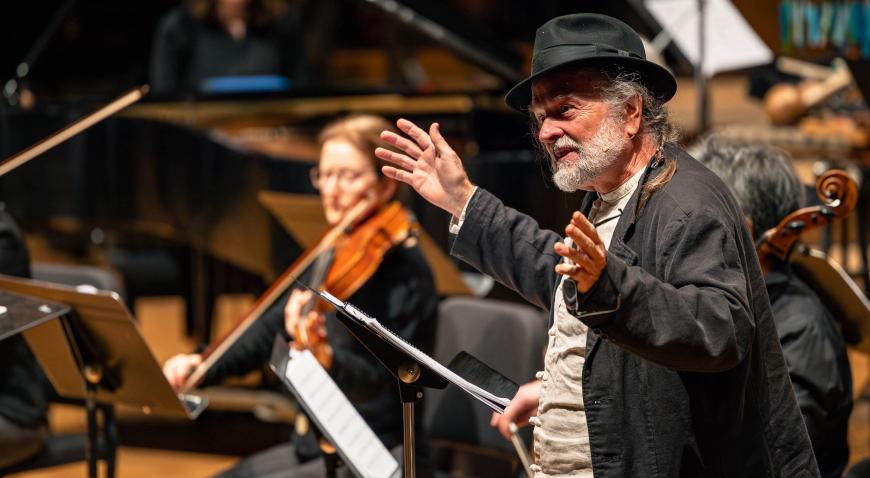
The plot is too complex and involves too many characters to recount in full. Briefly, The Road to Xibalba tells the story of the twins One Hunahpu and Seven Hunahpu, who were murdered by the Lords of Death. Xibalba is the Mayan underworld, where the Lords of Death dwell. The skull of One Hunahpu impregnates Little Blood, daughter of the Lords of Death (don’t ask for the biological details), resulting in the birth of the twins Hunahpu and Xbalanque. These twins are raised to think that they’re farmers, but they’re actually supposed to be ball players, like One Hunahpu and Seven Hunahpu.
The Road to Xibalba is at times haunting, funny, wry, magical, and touching. Like Hishuk ish ts’awalk, it’s strongly connected to the natural world in all its manifestations: animals, the passing of time, reproduction, and life and death.
Cox conjures an astounding array of sounds from the ensemble of piano, keyboards, two percussionists, flute/piccolo, clarinet/bass clarinet, violin, viola, cello, and bass. She also writes beautiful, lyrical vocal music, setting the English text with great natural flow. The narrator and singers all used body microphones, which might not be necessary if the ensemble were in an orchestra pit.
For Saturday’s performance, Campion showed himself to be a witty presence playing the narrator, setting the initial scene and then reading connective text. Soprano Amy Foote sang with delicate, transparent beauty as Little Blood, who cleverly defeats the Lords of Death when they send an Owl to try to kill her.
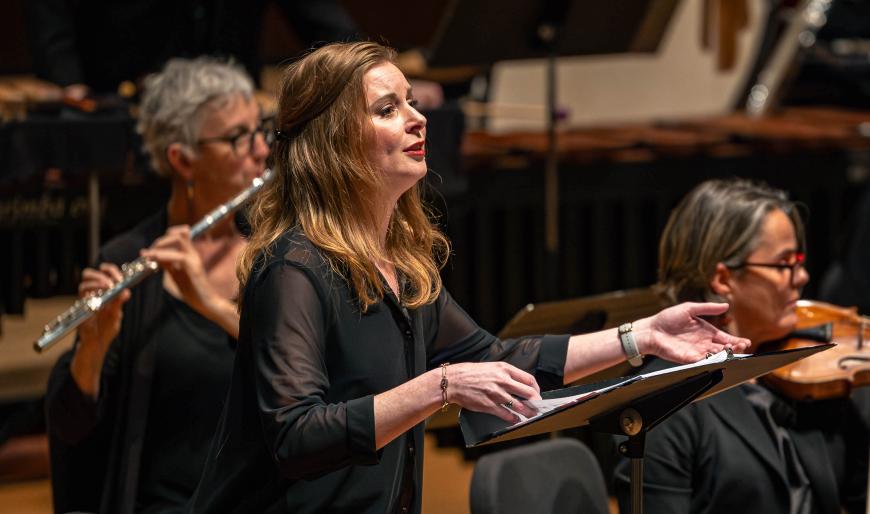
Tenor Michael Jankosky and baritone Nikolas Nackley portrayed the twins Hunahpu and Xbalanque with deadpan humor. Sara Couden brought her resonantly beautiful alto to grandmother Xmucane, who deceived the twins so that they believed they were farmers. In these scenes, there was no sign of the Owl or the Rat (the latter, in the full piece, clues in the twins to their real identity as ball players), but based on these excerpts, they’ll surely be strongly characterized — and possibly a lot of fun.
These scenes are so good — so dramatic and set to such excellent music — that the audience gave the performers and creators a well-deserved standing ovation. Let’s hope for a future staging of the complete Road to Xibalba.


